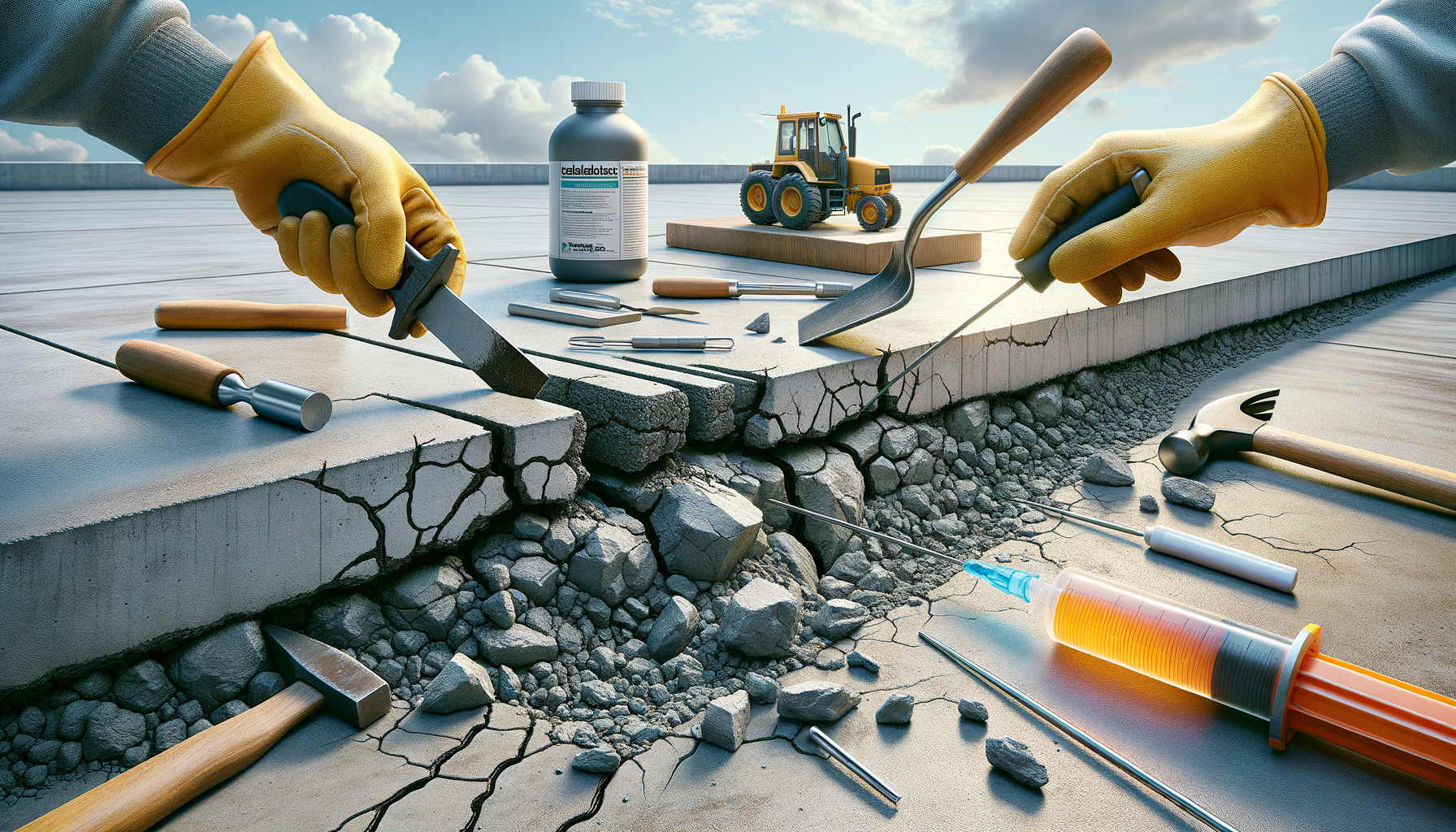Introduction to Concrete Crack Repair
Concrete is a ubiquitous material in construction, valued for its strength and durability. However, over time, even the toughest concrete can develop cracks due to various factors such as weather changes, structural movements, or improper curing. Understanding the importance of concrete crack repair is crucial in maintaining the integrity and longevity of structures. This article delves into the techniques and considerations involved in effective concrete crack repair.
Understanding the Causes of Concrete Cracks
Before embarking on repair, it’s vital to understand why cracks occur in the first place. Concrete cracks can arise from several causes, including thermal expansion and contraction, drying shrinkage, and external loads. Each type of crack may require a different approach to repair, making it essential to diagnose the problem correctly.
Thermal expansion occurs when concrete heats up and expands, often leading to cracking if there is no room for movement. Drying shrinkage, on the other hand, happens as the water in the concrete mix evaporates, causing the concrete to shrink and crack. External loads, such as heavy traffic or structural shifts, can also exert stress on concrete, leading to fractures.
Understanding these causes helps in selecting the right repair method, ensuring that the solution is not only effective but also long-lasting. Proper diagnosis is the first step in mastering concrete crack repair techniques.
Methods of Concrete Crack Repair
Once the cause of the crack is identified, choosing the appropriate repair method is crucial. Several techniques are available, each suited to different types of cracks and their underlying causes.
1. **Epoxy Injection**: This method is ideal for narrow cracks and involves injecting epoxy resin into the crack to seal it. Epoxy injection restores the structural integrity of the concrete and prevents further water infiltration.
2. **Routing and Sealing**: Suitable for larger cracks, this method involves opening up the crack to create a reservoir for a sealant. The sealant is then applied to prevent moisture ingress and protect the concrete from further damage.
3. **Stitching**: This technique involves drilling holes on both sides of the crack and inserting metal staples to hold the concrete together. Stitching is often used for structural cracks that require reinforcement.
Each method has its advantages and limitations, and the choice depends on factors such as crack width, depth, and the environment in which the concrete is located.
Materials Used in Concrete Crack Repair
The success of a repair job often hinges on the materials used. Various materials are employed in concrete crack repair, each with specific properties that make them suitable for different applications.
1. **Epoxy Resins**: Known for their strong adhesive properties, epoxy resins are commonly used in injection techniques. They provide excellent bonding and can restore the structural integrity of cracked concrete.
2. **Polyurethane Sealants**: These are flexible materials used in routing and sealing methods. Polyurethane sealants accommodate slight movements in the concrete, making them ideal for surfaces that experience thermal expansion and contraction.
3. **Cementitious Grouts**: These are used for filling large voids and cracks. Cementitious grouts are easy to apply and provide a durable solution for non-structural cracks.
Choosing the right material is essential to ensure the effectiveness of the repair and the longevity of the concrete structure.
Preventative Measures and Maintenance
While repairing existing cracks is important, preventing future cracks is equally crucial. Implementing preventative measures and regular maintenance can significantly extend the life of concrete structures.
1. **Proper Curing**: Ensuring that concrete cures properly during the initial setting phase can prevent shrinkage cracks. Adequate moisture and temperature control are key to proper curing.
2. **Control Joints**: Installing control joints allows for controlled cracking, directing where cracks will occur and preventing random cracking across the surface.
3. **Regular Inspections**: Conducting routine inspections can help identify potential issues before they become major problems. Early detection allows for timely repairs, reducing the risk of extensive damage.
By combining repair techniques with preventative strategies, one can effectively manage concrete cracks and maintain the structural integrity of concrete surfaces.
Conclusion
Concrete crack repair is a critical aspect of maintaining the structural health of any concrete construction. By understanding the causes of cracks, selecting appropriate repair methods, and using the right materials, one can ensure effective and long-lasting repairs. Additionally, implementing preventative measures can help avoid future issues, safeguarding the investment in concrete infrastructure.




Leave a Reply